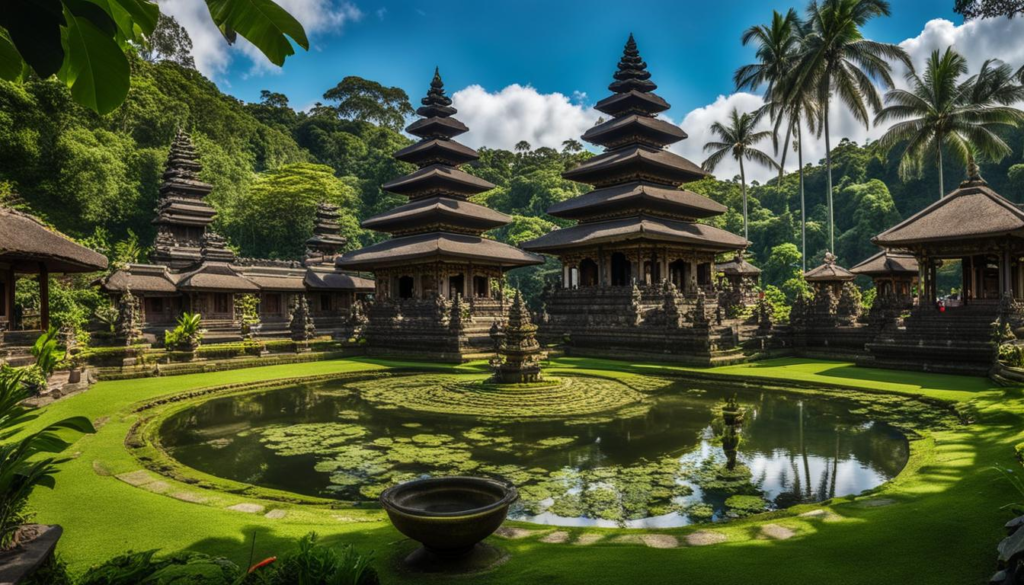
Bali’s temples, or pura, are among the island’s most captivating attractions, each embodying a unique aspect of Balinese Hindu culture and spirituality. Known for their stunning architecture, intricate carvings, and sacred atmosphere, Bali’s temples provide an enriching experience for travelers looking to understand the island’s deeply rooted spiritual traditions. Here’s everything you need to know about visiting Bali’s temples, from understanding the significance of each one to practical tips for making the most of your visit.
Why Visit Bali’s Temples?

Bali’s temples are not just historical sites; they are active places of worship, community gathering, and cultural expression. For the Balinese people, temples are central to daily life, with rituals and ceremonies marking important events.
Visitors can experience this living culture while admiring the temples’ architectural beauty, lush settings, and serene atmospheres. Visiting Bali’s temples offers insight into the island’s spiritual and cultural identity, making them essential stops for any traveler.
Must-Visit Temples in Bali
While Bali has thousands of temples, a few stand out for their unique settings, architectural beauty, and cultural significance.
1. Tanah Lot Temple

Location: Tabanan, Southwest Bali
Perched on a rocky outcrop overlooking the Indian Ocean, Tanah Lot is one of Bali’s most iconic temples. Known for its dramatic location and stunning sunsets, Tanah Lot is dedicated to the sea gods and is considered a sacred guardian of Bali’s coast.
- Highlights: Visit during low tide to walk up to the temple’s base, and stay for the sunset to witness the temple silhouetted against the sky.
- Local Tip: Arrive early to avoid crowds, as Tanah Lot is very popular with tourists.
2. Uluwatu Temple

Location: Pecatu, South Bali
Uluwatu Temple, or Pura Luhur Uluwatu, sits atop a steep cliff 70 meters above the Indian Ocean. The temple is dedicated to the sea and is famous for its stunning clifftop views and nightly Kecak dance performances, which take place against the backdrop of the setting sun.
- Highlights: Watch the traditional Kecak dance, a dramatic fire dance based on the Ramayana, performed by local dancers at sunset.
- Local Tip: The temple area is home to monkeys known for snatching belongings, so keep a close eye on your valuables.
3. Besakih Temple

Location: Besakih, East Bali
Known as the “Mother Temple of Bali,” Besakih is Bali’s largest and most important temple complex. Situated on the slopes of Mount Agung, Besakih comprises 23 separate temples, with the central temple dedicated to the Hindu trinity of Brahma, Vishnu, and Shiva.
- Highlights: The temple’s elevation offers breathtaking views of the surrounding landscape, and the annual temple festival draws thousands of pilgrims and visitors.
- Local Tip: Consider hiring a local guide to understand the significance of the many shrines and rituals. Dress modestly, as Besakih is one of Bali’s holiest sites.
4. Tirta Empul Temple

Location: Tampaksiring, Central Bali
Tirta Empul is a water temple famous for its holy spring water, believed to have purifying properties. Balinese Hindus come here to perform purification rituals by bathing in the temple’s sacred pools, making it a unique and spiritually significant site.
- Highlights: Visitors are welcome to participate in the purification ritual by following the local customs. The temple’s pools, fountains, and surrounding gardens create a peaceful atmosphere.
- Local Tip: If you wish to participate in the ritual, dress in a sarong and sash (available for rent) and follow the order of the fountains, as each has its own symbolic meaning.
5. Goa Gajah (Elephant Cave) Temple

Location: Ubud, Central Bali
Goa Gajah, or the Elephant Cave, is an ancient sanctuary dating back to the 9th century. Known for its unique cave entrance carved with images of mythical creatures, the temple features a meditation cave, bathing pools, and lush gardens.
- Highlights: Inside the cave, you’ll find small shrines dedicated to Hindu deities, while outside, there are fountains and pools used for purification.
- Local Tip: Plan to explore the surrounding jungle and nearby waterfalls, as they add to the temple’s mystical atmosphere.
6. Ulun Danu Beratan Temple

Location: Bedugul, North Bali
Ulun Danu Beratan Temple is a serene lakeside temple dedicated to the goddess of water, Dewi Danu. Set against the backdrop of Lake Beratan and surrounded by mountains, this floating temple appears to hover above the water, creating a magical setting.
- Highlights: The reflection of the temple on the lake is especially picturesque, particularly in the morning or late afternoon. The cool, misty weather of Bedugul adds to the temple’s tranquil ambiance.
- Local Tip: Try to visit during a ceremony or festival, as the temple grounds are filled with offerings, creating a colorful and lively atmosphere.
7. Taman Ayun Temple

Location: Mengwi, Central Bali
Built in the 17th century, Taman Ayun is a royal family temple surrounded by beautifully landscaped gardens, ponds, and pagoda-like shrines. The temple complex is a peaceful and scenic site with traditional Balinese architecture and lush surroundings.
- Highlights: Taman Ayun’s multi-tiered shrines and reflective pools are perfect for photography, and the temple grounds offer a peaceful place for a leisurely stroll.
- Local Tip: The temple is less crowded than others, making it ideal for those seeking a more quiet and serene temple experience.
Essential Etiquette for Visiting Bali’s Temples

When visiting Bali’s temples, it’s important to respect local customs and observe temple etiquette.
- Dress Modestly: Always wear a sarong and sash when visiting a temple. Many temples provide sarongs at the entrance, but you can also bring your own.
- Observe Quietness: Temples are sacred spaces where worshippers come to pray. Keep your voice low, refrain from shouting, and respect others’ moments of silence.
- Mind Your Positioning: Never stand or sit higher than a priest or temple deity. Avoid pointing your feet toward sacred objects, as this is considered disrespectful in Balinese culture.
- Respect Ongoing Ceremonies: If you encounter a ceremony, do not interrupt or walk through it. Stand back to observe, and avoid blocking pathways for worshippers.
- Be Mindful of Offerings: Small offerings, or canang sari, are often placed around temple entrances and walkways. Avoid stepping on them, as they are placed with devotion and respect.
Festivals and Ceremonies at Bali’s Temples

Attending a temple festival or ceremony is a great way to experience Bali’s cultural richness firsthand. Here are a few festivals that take place at temples across the island:
- Galungan and Kuningan: Celebrated every 210 days, these festivals honor the triumph of good over evil. Temples are adorned with intricate decorations, and locals dress in traditional attire, creating a vibrant atmosphere.
- Odalan: Each temple celebrates its own “birthday” or Odalan, which occurs every 210 days based on the Balinese calendar. During these festivals, temples are beautifully decorated, and elaborate ceremonies and dance performances take place.
- Nyepi: Known as the Day of Silence, Nyepi is a unique Balinese Hindu festival where the entire island observes a day of silence, fasting, and meditation. On the eve of Nyepi, temples host the Ogoh-Ogoh parade, where giant demonic effigies are paraded through the streets to ward off evil spirits.
Practical Tips for Visiting Bali’s Temples
- Early Mornings Are Ideal: Visiting temples in the early morning offers a peaceful experience before the crowds arrive, especially at popular sites like Tanah Lot and Uluwatu.
- Check for Entrance Fees: Most major temples have a small entrance fee. Be prepared with cash, as credit cards are not always accepted.
- Hire a Guide: A knowledgeable guide can enrich your experience, explaining the history, symbolism, and customs of each temple.
- Bring a Reusable Water Bottle: The tropical climate can make temple visits hot and tiring, so it’s wise to stay hydrated. Many temples have shaded areas or gardens where you can take a break.
- Be Patient with Photography: Bali’s temples are popular photo spots, but they are also places of worship. Be mindful not to disrupt ceremonies or block pathways while taking photos.
Conclusion
Bali’s temples are not only architectural marvels but also gateways to the island’s soul, where spirituality, art, and daily life converge in a harmonious blend. Visiting these temples provides a deeper appreciation of Bali’s unique culture, with each temple offering its own experience and perspective on Balinese Hinduism.
Whether you’re admiring the sunset over Tanah Lot, watching a Kecak dance at Uluwatu, or participating in a purification ritual at Tirta Empul, each temple offers an unforgettable glimpse into Bali’s spiritual heritage. As you explore these sacred sites, remember to approach each temple with respect, reverence, and an open heart, allowing Bali’s magic and spirituality to enrich your journey.